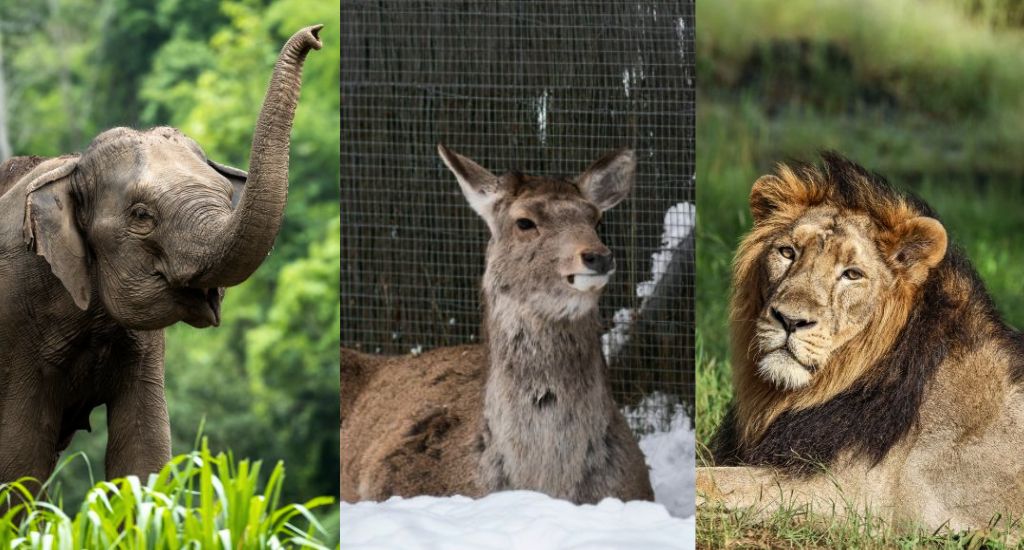
Elephants to buffaloes – species you didn’t think are endangered
Forests, rivers, oceans and our neighbourhood – creatures all around us are in danger of extinction. Here are a few names on the endangered list that may just about surprise you.

Forests, rivers, oceans and our neighbourhood – creatures all around us are in danger of extinction. Here are a few names on the endangered list that may just about surprise you.
Talk about animal conservation in India and tigers come first to mind. However while the Bengal tiger is certainly in need of legal and social protection, there are many other commonly-talked about creatures that are in need of public attention. Here are some of the species on India’s Red List that we need to talk about more:
Asiatic lion
Once on the verge of extinction, the Asiatic lion has remarkably recovered in the Gir forests of Gujarat. The entire population, however, remains vulnerable due to limited habitat and potential disease outbreaks.
Photo courtesy Shutterstock
Asian elephant
Asian Elephants are revered in Indian culture but they face threats like habitat fragmentation, human-elephant conflicts and poaching for ivory and body parts. The initiatives for conservation focus on securing habitats, minimising human-elephant conflicts and raising awareness.
Photo courtesy Shutterstock
Water buffalo
The wild water buffalo, native to the wetlands of northeastern India, is critically endangered. Hunting and interbreeding with domestic buffalo pose additional challenges to their survival. Implementing regulated breeding programmes and protecting their habitats are some conservation efforts being made for them.
Photo courtesy Shutterstock
Indian vulture
Indian vultures have declined due to the use of the veterinary drug diclofenac in livestock, which causes renal failure in vultures since they feed on cattle carcasses. Conservationists are working to get the drug banned and establish vulture-safe zones to aid their recovery.
Also Read | Vanishing vultures find friends for their survival
Photo courtesy Shutterstock
Gharial
Found in the rivers of northern India, the gharial is a unique and critically endangered reptile – threatened by river pollution and accidental entanglement in fishing nets. Conservation programmes for gharials focus on habitat restoration, captive breeding and raising public awareness.
Also Read | ‘Wildlife conservation isn’t anti-development’
Photo courtesy Shutterstock
Kashmir stag
A majestic deer species found in the Kashmir Valley, the Kashmir stag is also known as hangul, and is now critically endangered due to loss of habitat, overgrazing and poaching. Its conservation efforts involve habitat restoration, community engagement and anti-poaching measures.
Also Read | Will this stag party again?
Photo courtesy Shutterstock
Blue whale
The blue whale is a migratory marine mammal species found in the waters around India. It faces threats such as ship strikes, entanglement in fishing gear and ocean noise pollution. Initiatives to conserve the blue whale aim to reduce these threats through shipping regulations, protected areas and public education.
Photo courtesy Shutterstock
Great Indian bustard
Earlier, the great Indian bustards were present in the whole of western India and parts of Pakistan. But as per the official counting done in 2017, only a few of them remain now. They mostly die after colliding with high-tension wires, windmills and solar panels, and their eggs are devoured by other animals. A focused bustard conservation programme is needed to tackle these issues.
Also Read | ‘Only about 100 great Indian bustards remain now’
Photo by Radheshyam Bishnoi
Golden mahseer
This fish is found in rapid streams, rivers and lakes in the Himalayan region. The species is now threatened due to pollution, loss of habitat and over-fishing. A total of 47 species of mahseer exist in the world, out of which 15 are found in India. Bringing public awareness, improving water health and implementing fishing rules are some of the ways in which its population can be boosted.
Also Read | Fin following: Gaga over golden mahseer
Photo courtesy Shutterstock